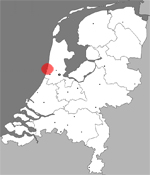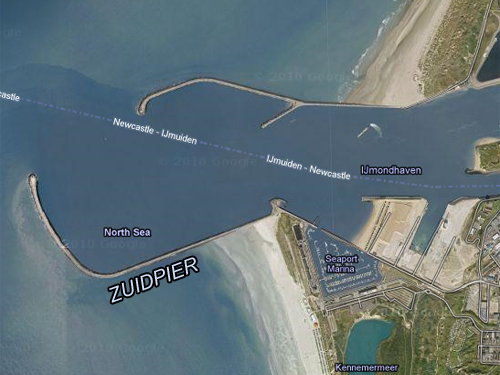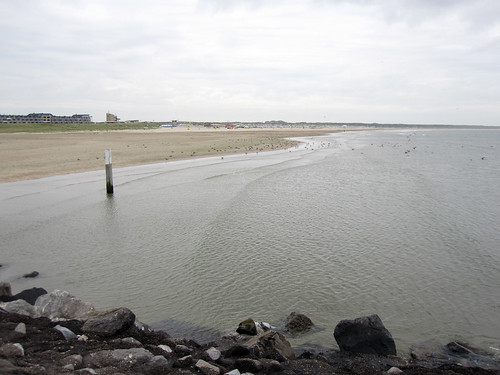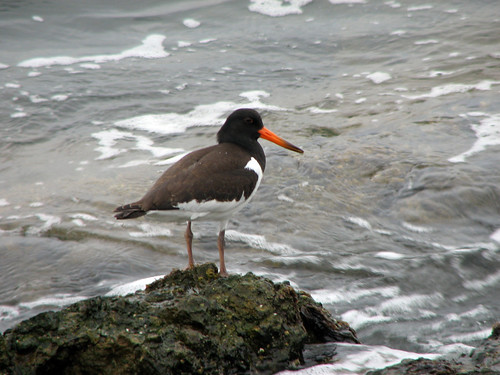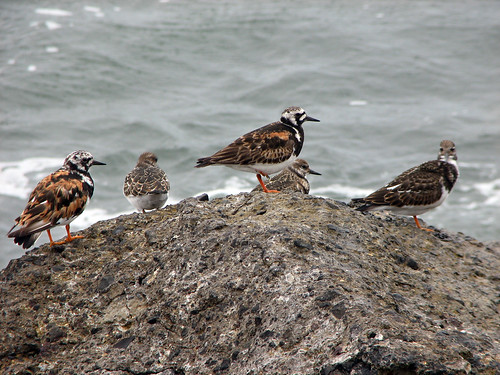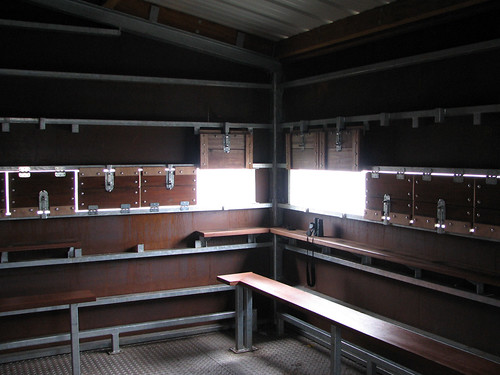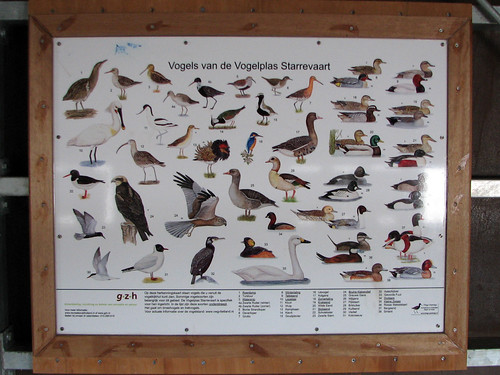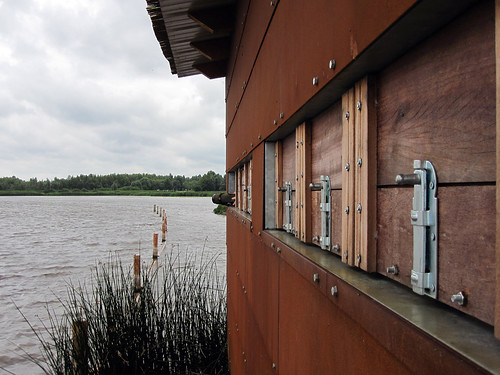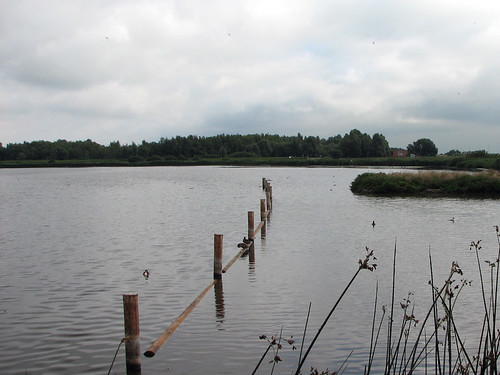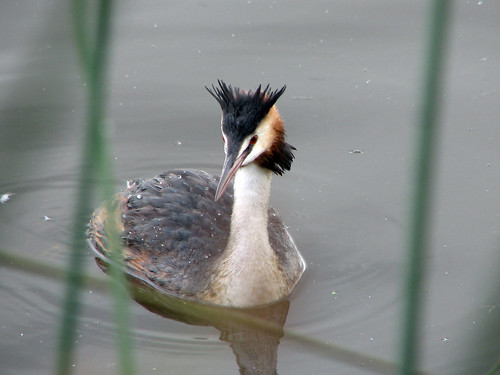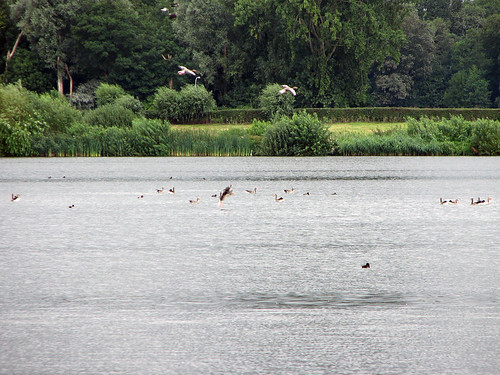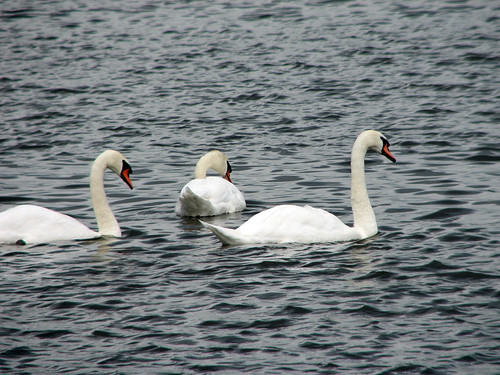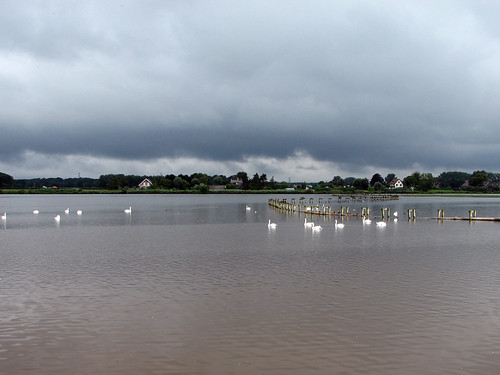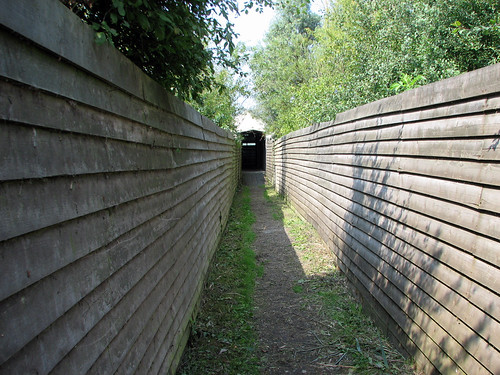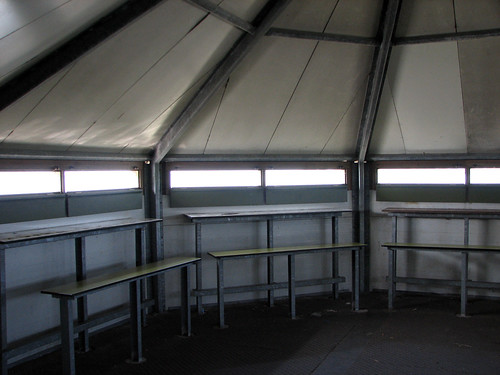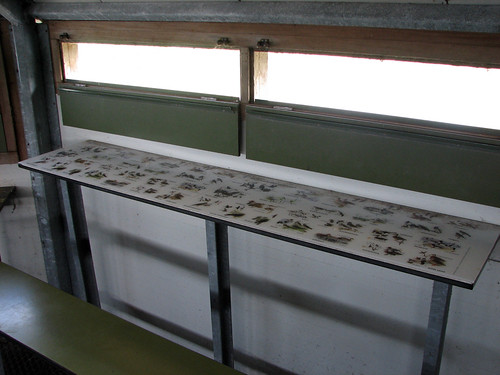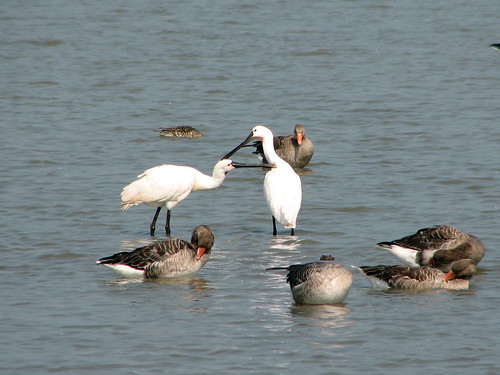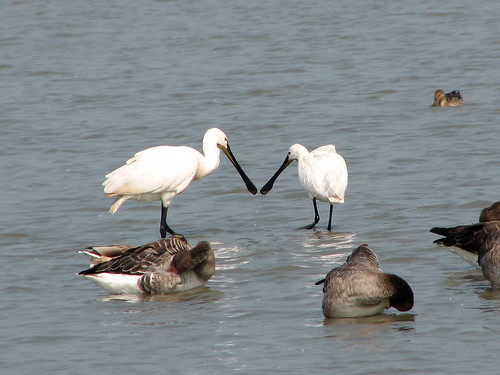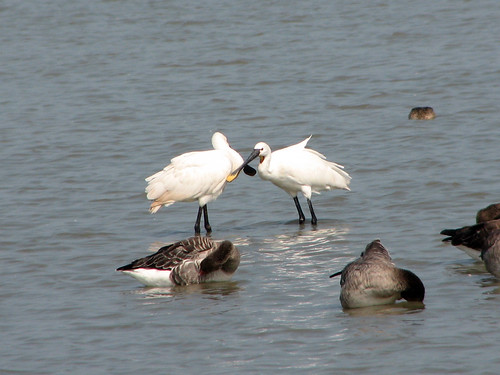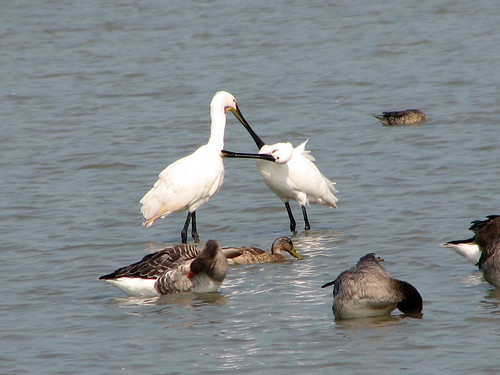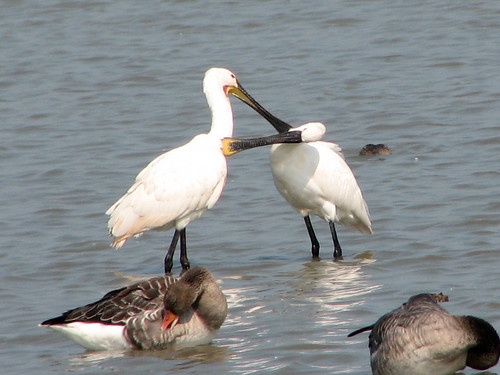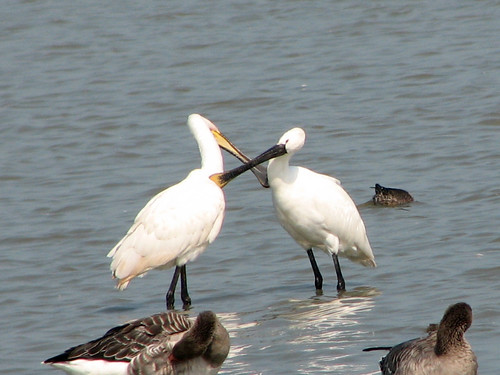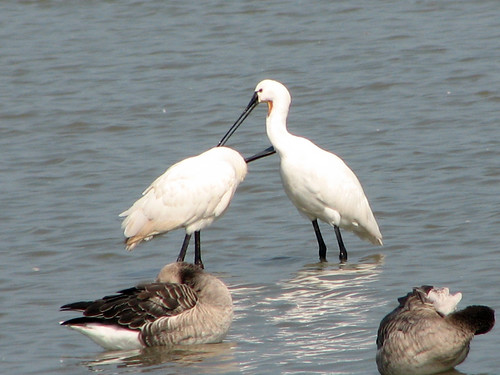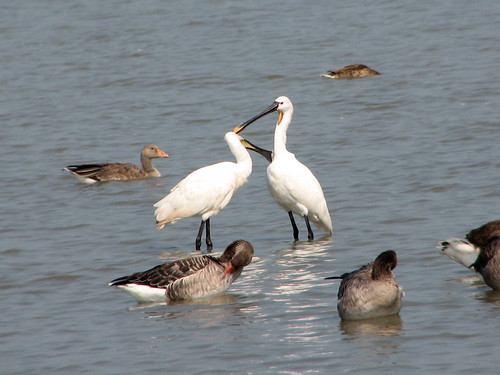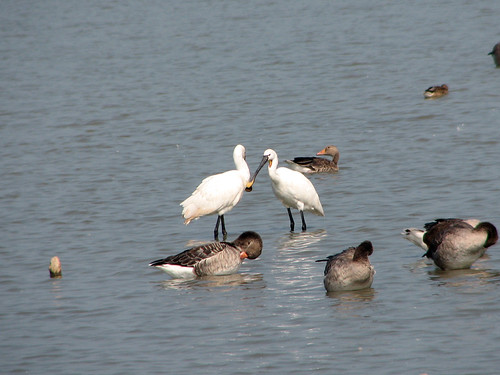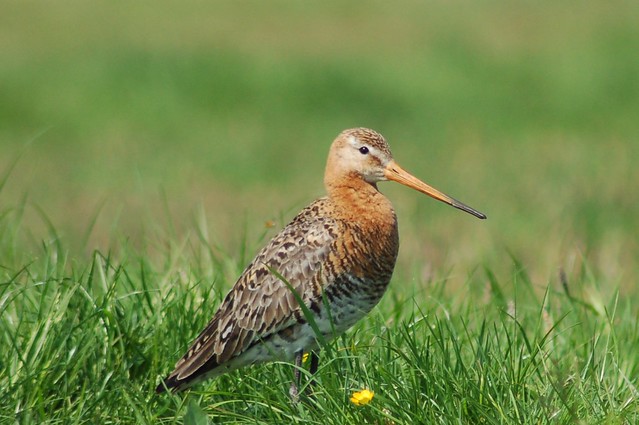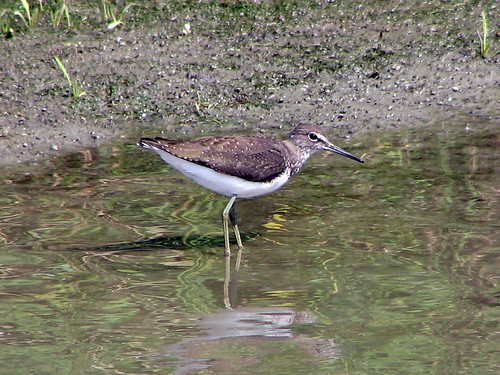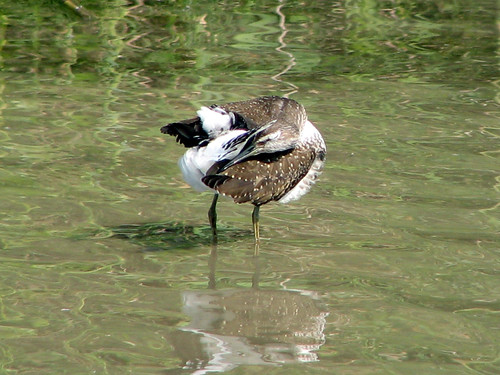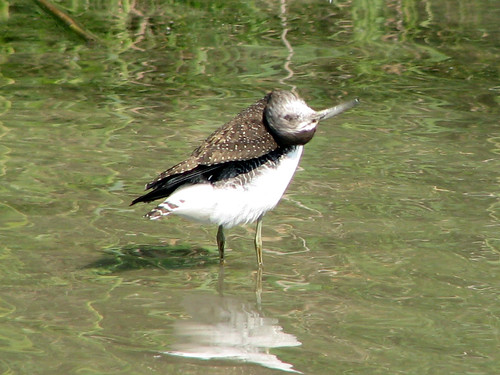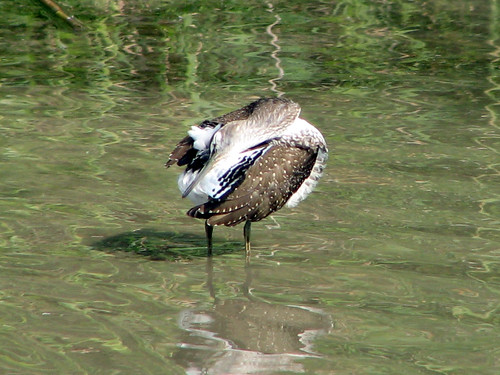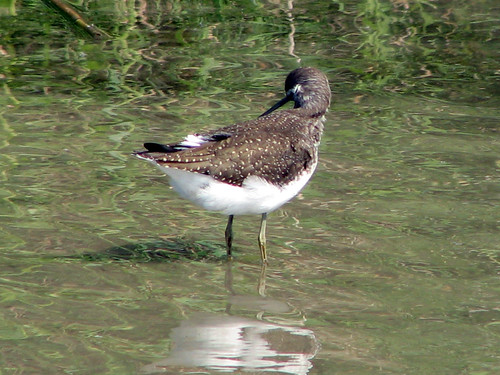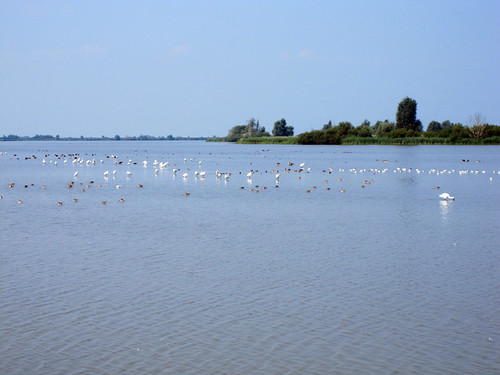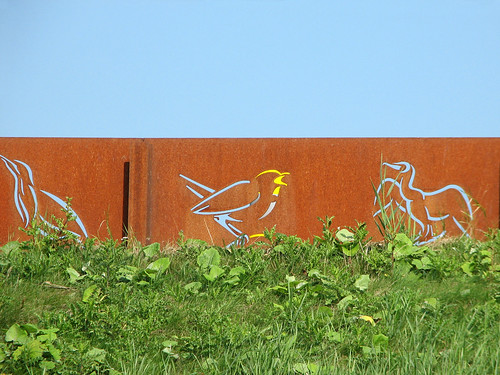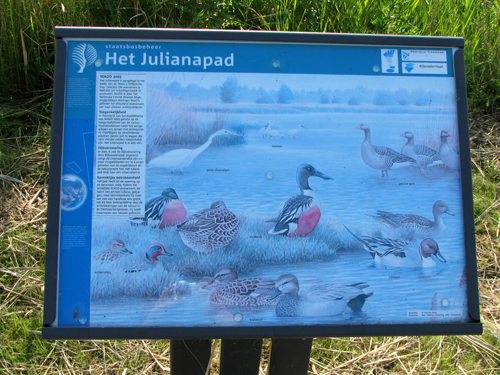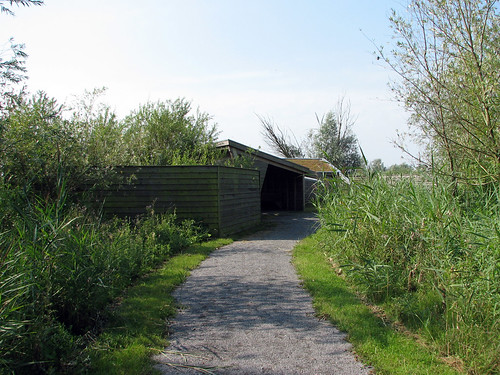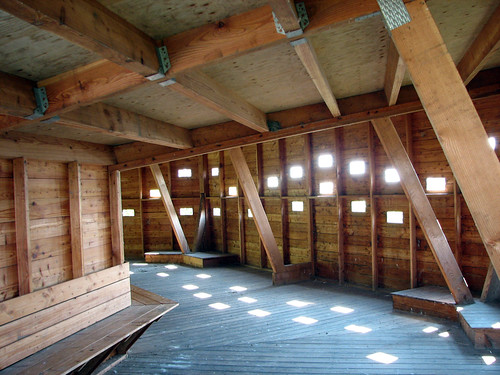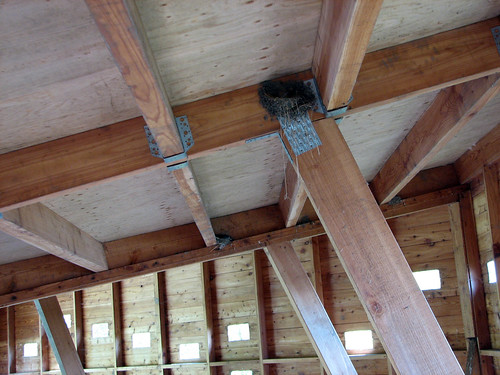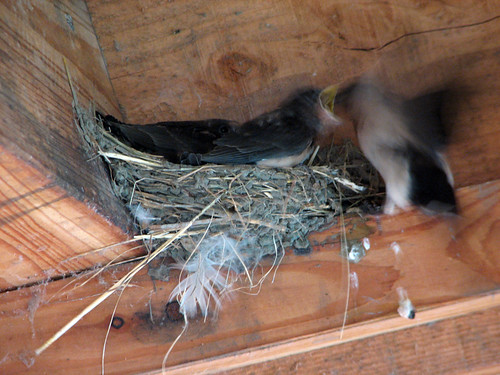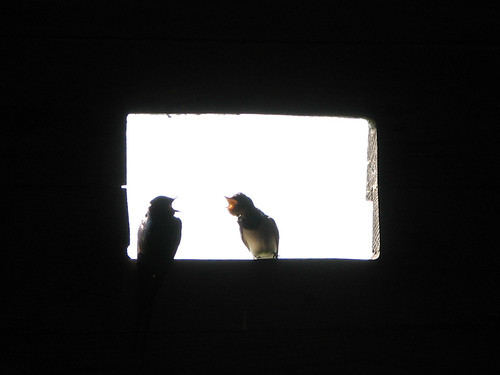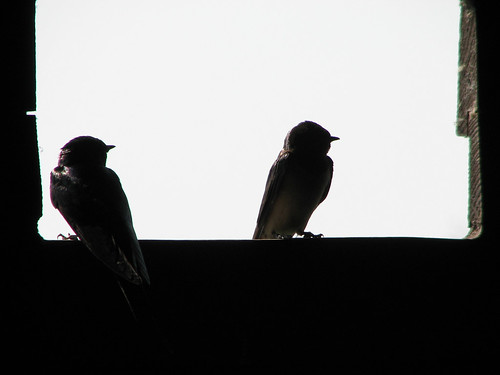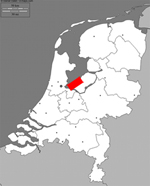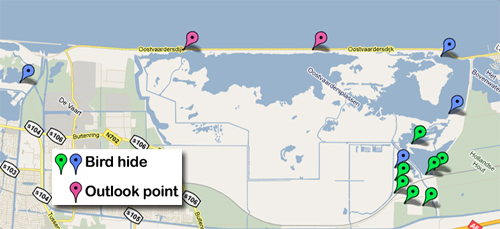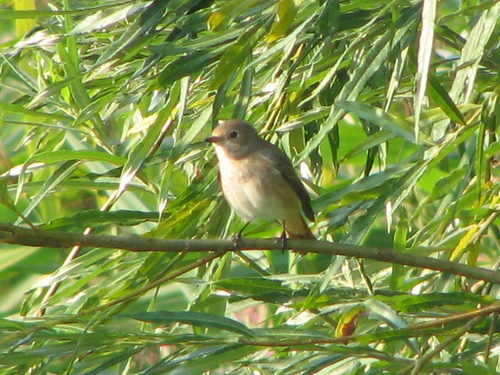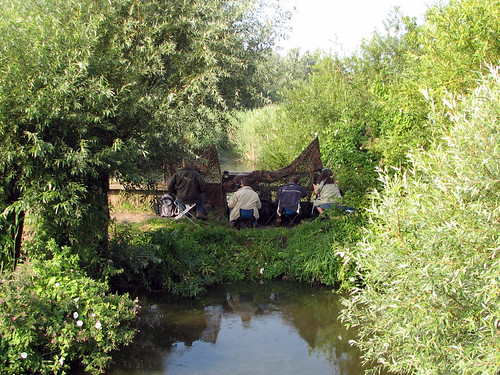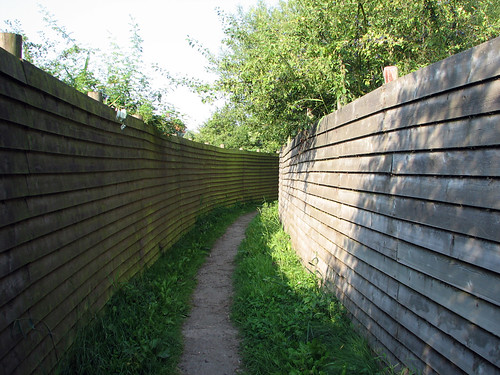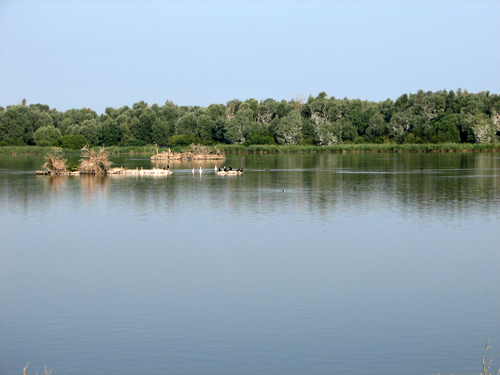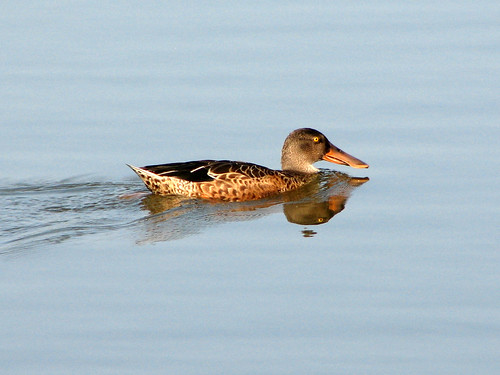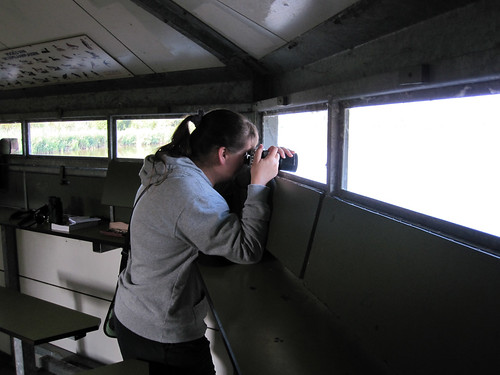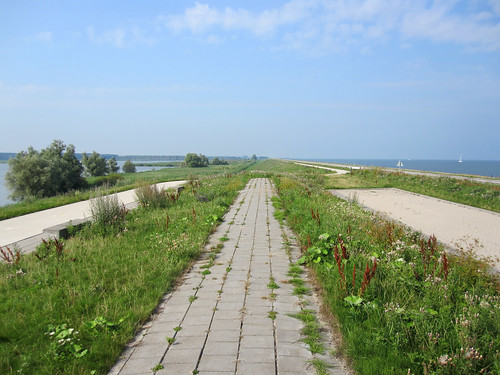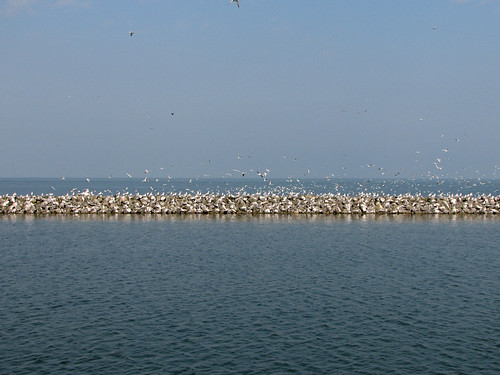Fatten up and go!
During our recent visit to Holland, I had a free afternoon on my own in Leiden. I visited one of my favorite museums in the world, Naturalis, the national natural history museum of the Netherlands. The museum is always a treat to visit, but I really lucked out because one of the special temporary exhibits was an excellent study of bird migration.
The exhibit, Opvetten en wegwezen (Fatten up and go!), was presented in one large exhibit room. There were cases of mounted birds arranged by average migration distance. Information provided by each case showed the route each of the birds takes during migration.
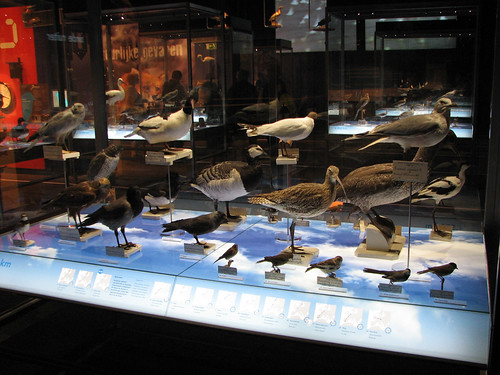
Display case with short-distance migratory birds

Display cases with migratory birds
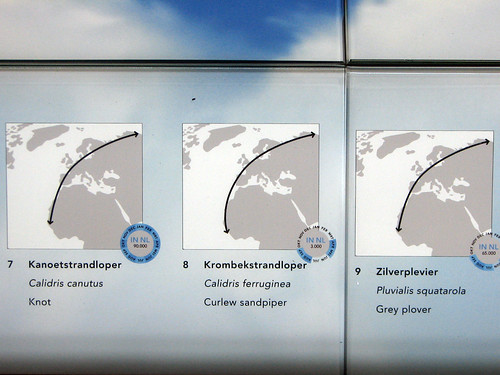
Migration routes of birds that travel through the Netherlands
Between these cases were various migration topics explained, like how birds navigate, the dangers birds face during their long travels, and how they prepare for the journey.

Display on the timing of migration behind more bird cases
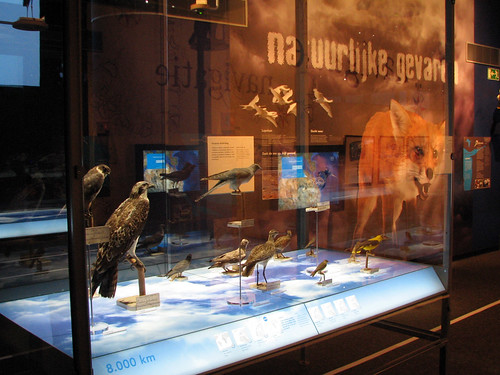
“Natural dangers” display behind more bird cases
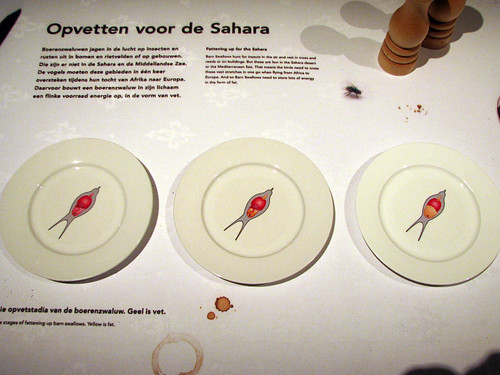
The different fat levels in a Barn Swallow as it prepares for its journey
There were also several points where current bird research being conducted in the Netherlands was explained. A written interview with the involved scientists was shown, along with supplemental media. Here, the current work being done with Eurasian Spoonbills is explained by Ornithologist Tamar Lok. Small text (click to see full size at Flickr) reads, “The protection of birds in the Netherlands started with (Eurasian) Spoonbills. The Naardermeer was declared a nature reserve for this bird species. Later on, more marshes and coastal areas were declared protected.” I had no idea that the spoonbill was a ‘spark bird’ for Dutch bird conservation!
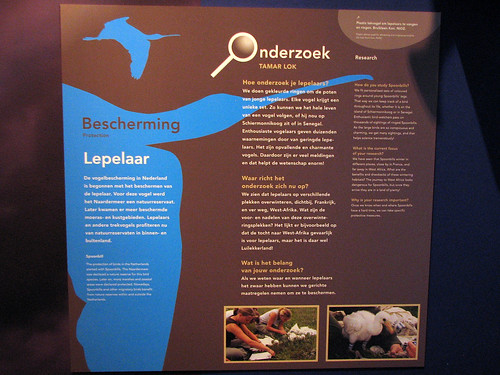
All about Eurasian Spoonbill research in the Netherlands
I was particularly interested in bird banding endeavors. A short video showed how Barn Swallow researchers work, and I was kind of wowed by the amount of birds caught in their nets.

Lots of Barn Swallows in mist nets
The last bird cases were reserved for the birds with the longest migration routes. The final bird was the Arctic Tern, with a migration journey of 15,000 kilometers.
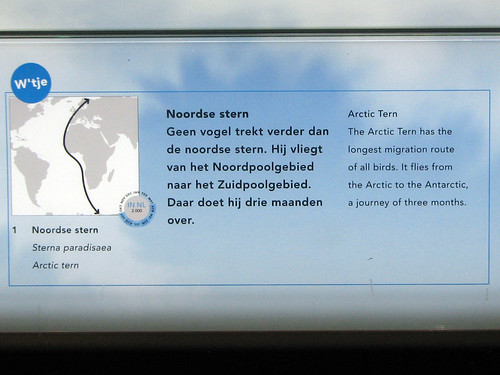
The Arctic Tern travels over 9,000 miles during migration!
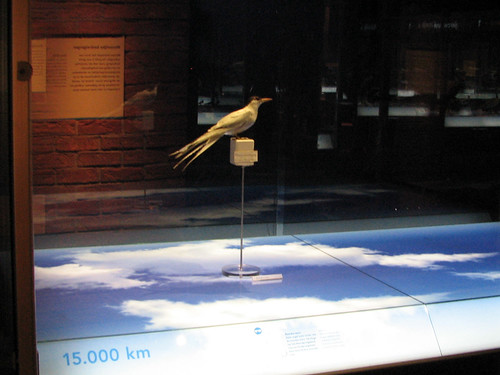
Arctic Tern, the migration champion of the exhibit
Opvetten en wegwezen will continue at Naturalis through February 20th, 2011. I highly recommend it!



